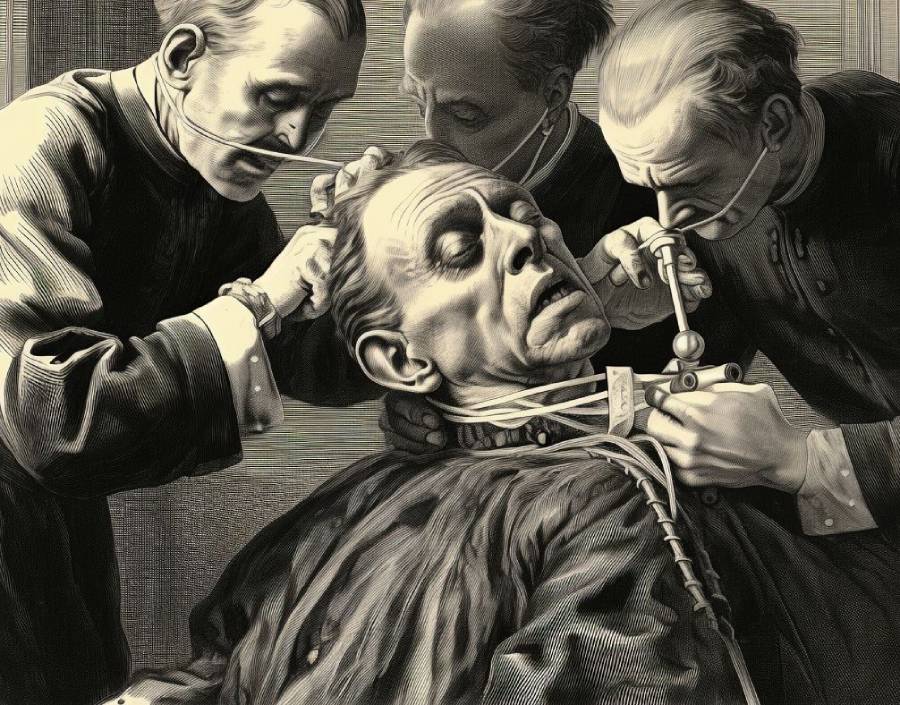Tracheal intubation, usually simply referred to as intubation, is an invasive medical procedure in which a tube is placed into the trachea to maintain a patient’s airway. Airway management has undergone considerable advancements, allowing doctors to care for more severely ill patients than ever before 1. Intubation devices have a long and colorful history leading up to modern endotracheal tubes and airway protective devices, which allow for the safe passage of a wide array of gases in both medical and surgical settings 2.
Tracheostomy practices have been recorded as early as 3,600 BC according to some Egyptian tablets 3. Ancient descriptions of tracheostomy also appear in old Hindu scripts from around 2,000 BC and Egyptian documents dating back to 1,500 BC 4. Then in 1543, Vesalius, the founder of modern human anatomy, reported performing the first tracheal intubation carried out in an animal 4.
In the 19th century, which was marked by a series of clinical successes, the French internist Trousseau reported 200 patients suffering from diphtheria who were successfully saved by tracheostomy. In the early 1870’s, the German surgeon Trendelenburg then performed the first instance of endotracheal anesthesia in human patients. Subsequently, by 1878, the Scottish surgeon Macewen reported the first elective endotracheal intubation used for anesthesia. He isolated the trachea by packing the hypopharynx to protect the airway from blood and debris. Tracheostomy and intubation were then improved clinically and, finally, broadly used during the First World War 4. This period can be considered to be another starting point in the history of intubation and intubation devices, specifically considering intubation in the form typically used today.
By the late 19th century, advances in endoscopic instrumentation had improved to such a degree that direct laryngoscopy had finally established itself as a viable means to non-surgically secure the airway. Though the devices themselves continued to improve after this point in history, direct laryngoscopy as a technique remains in use for intubation today. However, nosocomial mortality rates remained high until advances in anatomy and physiology, as well as a growing appreciation of the germ theory of disease, significantly reduced the morbidity and mortality of intubations.
Nasotracheal intubation was not widely practiced until the early 20th century, which finally saw the transformation of the practices of tracheostomy, endoscopy and non-surgical tracheal intubation from rarely employed procedures to essential elements in the clinical practice of anesthesia, critical care medicine, emergency medicine, gastroenterology, pulmonology and surgery. The digital revolution of the 21st century has since also brought newer technologies to tracheal intubation. Several manufacturers for example have developed video laryngoscopes that use digital technology to visualize prior to tracheal intubation. The Glidescope video laryngoscope is an example of such a device 5,6. Some research suggests that video laryngoscopes represent the safest form of intubation devices across history. Continuing research should further improve the technique and technology of intubation.
References
1. Goksu, S. & Sen, E. History of Intubation. J. Acad. Emerg. Med. 14, 35–36 (2015).
2. A Brief History of the Endotracheal Tube | Emergency Physicians Monthly. Available at: https://epmonthly.com/article/a-brief-history-of-the-endotracheal-tube/. (Accessed: 31st August 2023)
3. Szmuk, P., Ezri, T., Evron, S., Roth, Y. & Katz, J. A brief history of tracheostomy and tracheal intubation, from the Bronze Age to the Space Age. Intensive Care Medicine (2008). doi:10.1007/s00134-007-0931-5
4. Ezri, T., Evron, S., Hadad, H. & Roth, Y. History and medicine – Tracheostomy and endotracheal intubation: A short history. Harefuah (2005).
5. Cooper, R. M., Pacey, J. A., Bishop, M. J. & McCluskey, S. A. Early clinical experience with a new videolaryngoscope (GlideScope®) in 728 patients. Can. J. Anesth. (2005). doi:10.1007/BF03027728
6. Agrò, F., Barzoi, G. & Montecchia, F. Tracheal intubation using a Macintosh laryngoscope or a GlideScope® in 15 patients with cervical spine immobilization [4]. British Journal of Anaesthesia (2003). doi:10.1093/bja/aeg560
